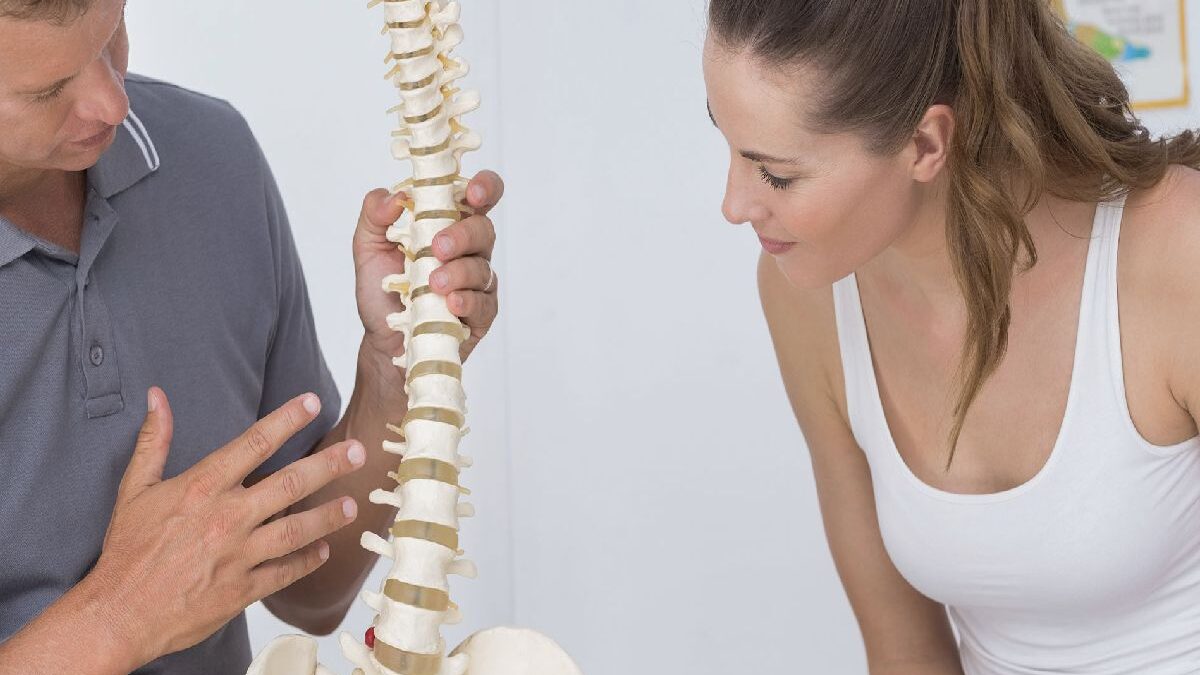
Thailand’s private healthcare facilities have seen a remarkable transformation over the past thirty years. They are now on par with any other health care facility in the world. Bangkok, the capital city, is a prime example. Thailand’s modern hospitals are equipped with the latest technology and highly-trained physicians, nurses, and support staff who use up-to date surgical and medical techniques.
A person’s body is always at risk of sickness, injury, and disease. A wise person will take precautions to reduce the risk to their health. Even with the best intentions, time will march on. As we age, our bodies begin to wear out and develop health problems.
Back problems are one of the most common issues that a person may face. More than half of all people in their lifetime will experience some type of abnormality of the spinal disc. Many of these cases are herniated disks.
Understanding Spine
The spine of a human is a complex mechanical structure made up of vertebrae that connects the different parts of the muscular-skeletal system. The spine facilitates the movement of the body. Bending, twisting, and turning, as well as sitting and walking, are all made possible by the spine.
The spine protects the spinal cord. This is a column made up of nerves which connects the brain to the rest of the human body. It is vital that information travels unhindered from the spinal cord all the way to the brain. Without it, there would be no movement in the body and its organs wouldn’t function.
A newborn child’s spine is made up of 33 vertebrae, and it has five segments. The cervical segment is the upper segment, which consists of seven vertebrae. The thoracic region is below this, with 12 vertebrae, followed by the lumbar area, which has another 5. The sacrum has 5 vertebrae, and the coccyx has 4.
As children grow and develop, the spine undergoes changes. The sacrum and coccyx vertebrae fuse to form a single spine. In adulthood, the spine has 24 vertebrae separated by intervertebral disks.
What is an intervertebral disc?
The intervertebral disks are cushions that absorb impact and are located between the bones of the spine. The nucleus is composed of water and loose collagen fibers. The annulus surrounds the inner core. It is a complex series of interwoven fibrous tissues. Its purpose is to protect the nucleus and keep it together.
Herniation occurs when the outer annulus of a disc is damaged in some way, resulting in a tear. Nucleus pulposus will then push against the tear, and begin to protrude. The protrusion will irritate the nearby nerves and cause problems for the person with a herniated disk.
Symptoms of a Herniated Disc
Hernias may occur in any intervertebral disk, but the majority occur in the lower back. Hernias can cause a variety of symptoms, which are partly dependent on where the disc is located and how much the hernia presses on a nearby nerve. Most often, the symptoms are felt on one side.
The lower spine is affected if there are pains in the buttocks or thighs, and sometimes even the feet. Pain in the shoulders and arms is more common with discs located in the upper part of the spine. When a person coughs or sneezes, they can experience shooting pains in the arms and legs.
A herniated disk can cause pressure to be exerted on the nerve, which will result in burning, numbness, and tingling. The muscles that are associated with the nerve can also weaken and cause further problems to the person. The constant pain, numbness, and weakening muscles can make daily activities difficult and even debilitating.
Cauda-equina syndrome is a less common symptom. The caudaequina syndrome occurs when a herniated disk presses on the bundle of roots that is known as the caudaequina. These nerves form part of the control system that controls the bowels and bladders. A herniated disk can cause these functions to be disrupted. There are many symptoms that can occur, but it’s also possible to not have any symptoms.
What are the most common causes of disc herniation?
Ageing is the most common cause for a herniated disk. Degeneration occurs as a result of daily wear and tear. The discs become stiffer and less flexible, making them more prone to rupture or tear. It can happen not only from excessive effort but also by bending and twisting.
It is difficult to pinpoint the exact cause of herniated disks. The cause is often picking up items with the back instead of bending the knees. A sudden twisting of the upper part is also likely. Herniated disks are rare to be caused by trauma such as a fall, impact or other injury.
Herniated disks are more common in people with physically demanding occupations or who are overweight. It is also possible to inherit an intervertebral disk herniation predisposition. Smoking can also be a factor, as it reduces the oxygen supply to a disk and can cause it to break down faster.
Herniated Discs: Treatment
A herniated disk is easy to diagnose. To diagnose a herniated disk and determine its severity, imaging and nerve tests are available. Imaging may include standard x rays as well as myelogram x rays and MRI or CT scans. These tests can also be used to rule out fractures and other conditions.
A nerve test will include a study of the conduction of nerve impulses. This test measures the electrical impulses of the nerve and the function of the muscles. The electromyography (EMG), which measures the electrical activity of a muscle from contraction to rest, can also be used. A small electrode is inserted directly into the muscle.
Medication
Herniated disks are often treated with medication, especially if they are considered minor. Herniated disk sufferers can find relief from pain killers such as acetaminophen and ibuprofen.
Injections of cortisone are an effective way to relieve pain. Your doctor may recommend this course of treatment if oral medications have failed to work. With the help of spinal imaging, the corticosteroid is injected around the spinal cord nerves.
Muscle relaxers and pain relievers are less effective in treating the herniated disk. Due to their side-effects, these are not the first choice of treatment. Muscle relaxers may cause dizziness and sedation, which could lead to accidents or falls. Opioids can be addictive, so they are usually avoided. They are typically only prescribed for temporary pain relief.
Physical Therapy
Thailand’s modern medical approach places great value on the benefits of physical therapies. Physical therapy clinics have become commonplace in Thailand’s main hospitals. They are an essential part of treating herniated disks. Patients will be instructed by skilled practitioners on how to position themselves while laying down, seated, and standing. They will also learn the correct exercises for relieving pain.
The following are some of the most effective ways to reduce your risk.
Surgery may be required in some cases if pain relief and containment do not work or if the condition becomes acute. In most cases the protruding disc part will be removed. The success rate of partial disc removal for herniated disks is very high.
Rarely will the condition require the removal of a disc in its entirety. The affected vertebrae can be fused as a single unit if the entire disc is removed. Metal hardware is required to stabilize the affected area while the long process of bone fusion occurs. Specialist doctors may suggest an alternative solution, such as the insertion artificial disc.
Do you want to get treated for herniated disks in Thailand? Visit Spine and Joint Center Thailand if you are interested.
Related posts


